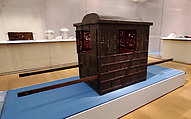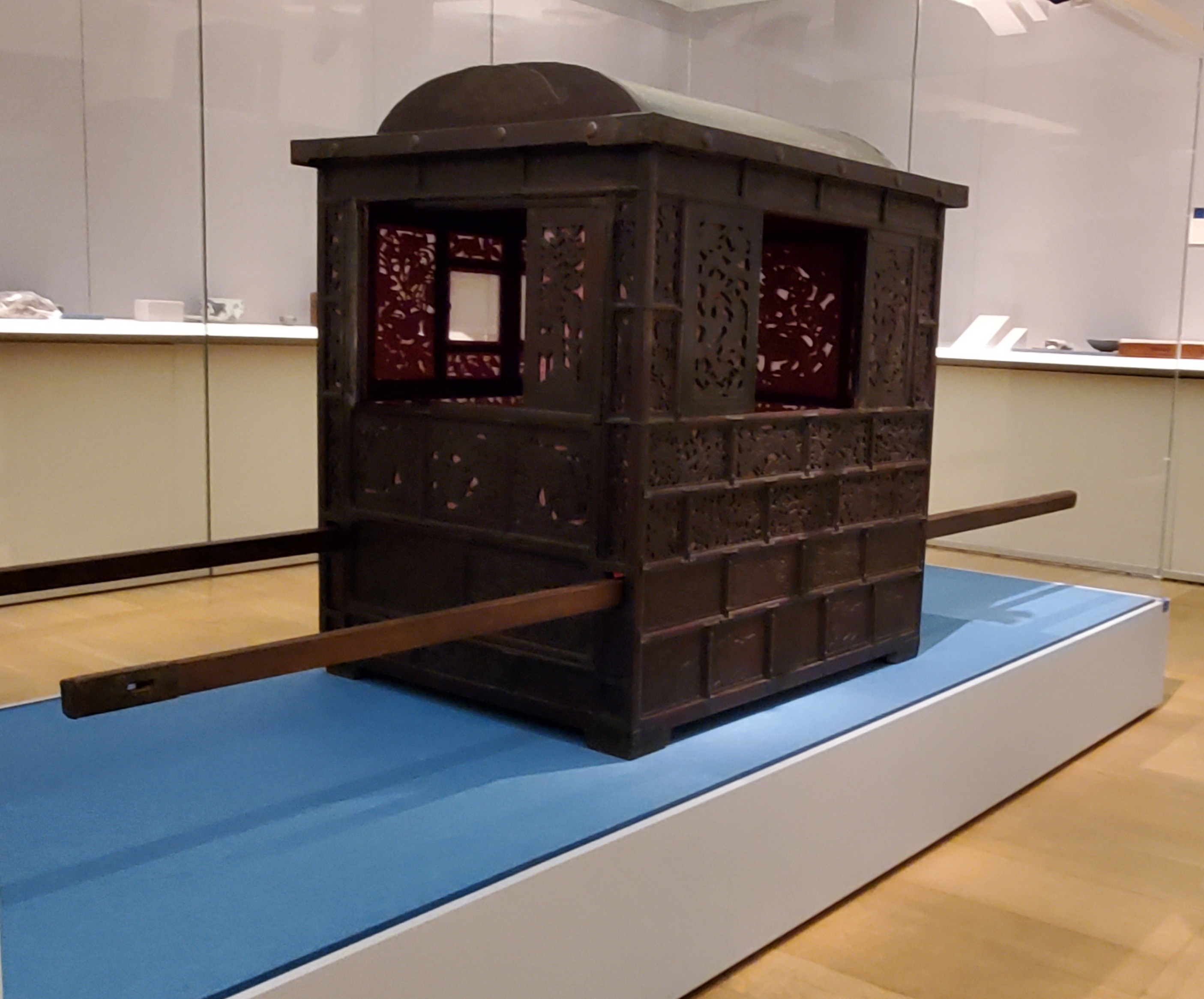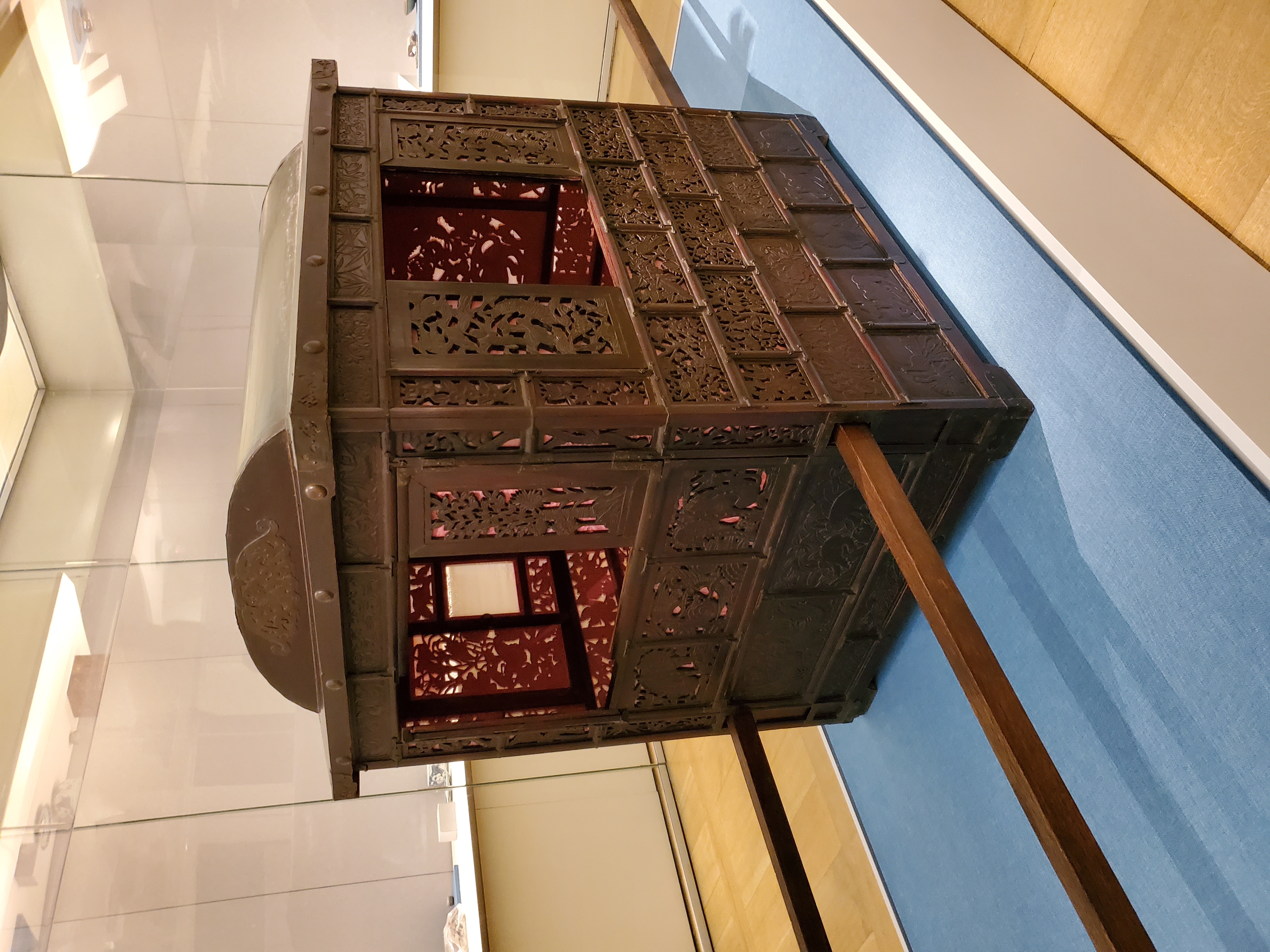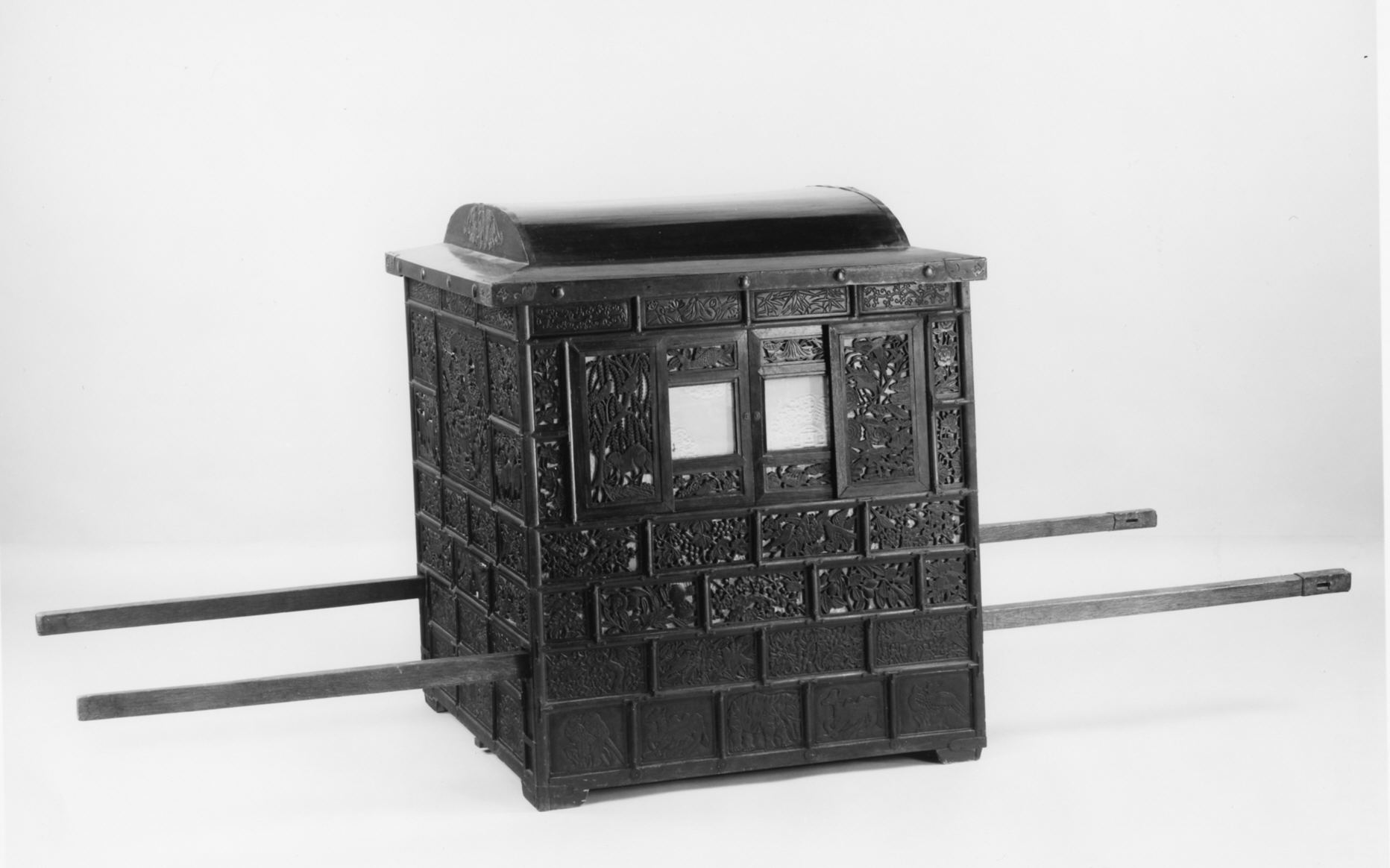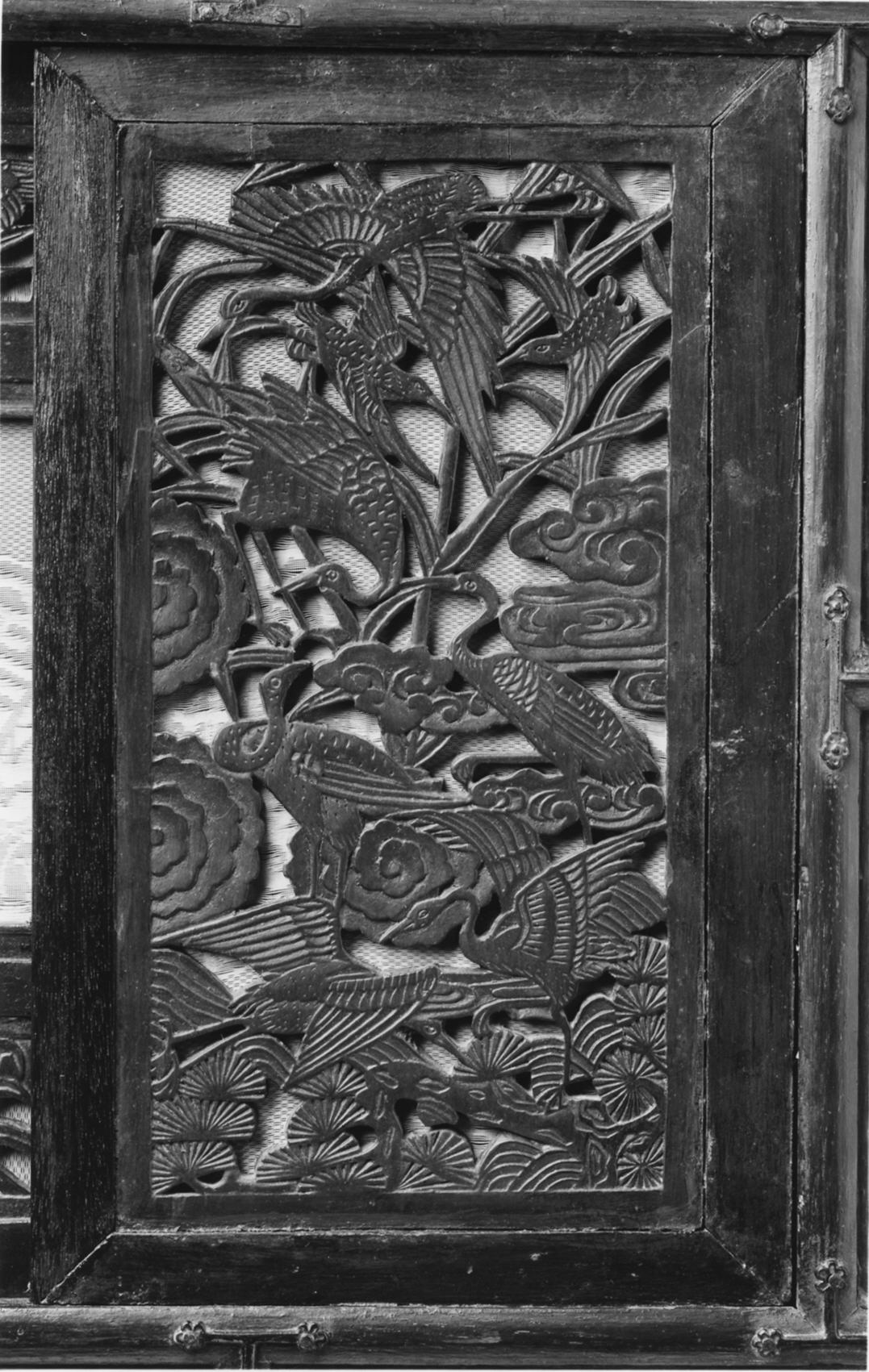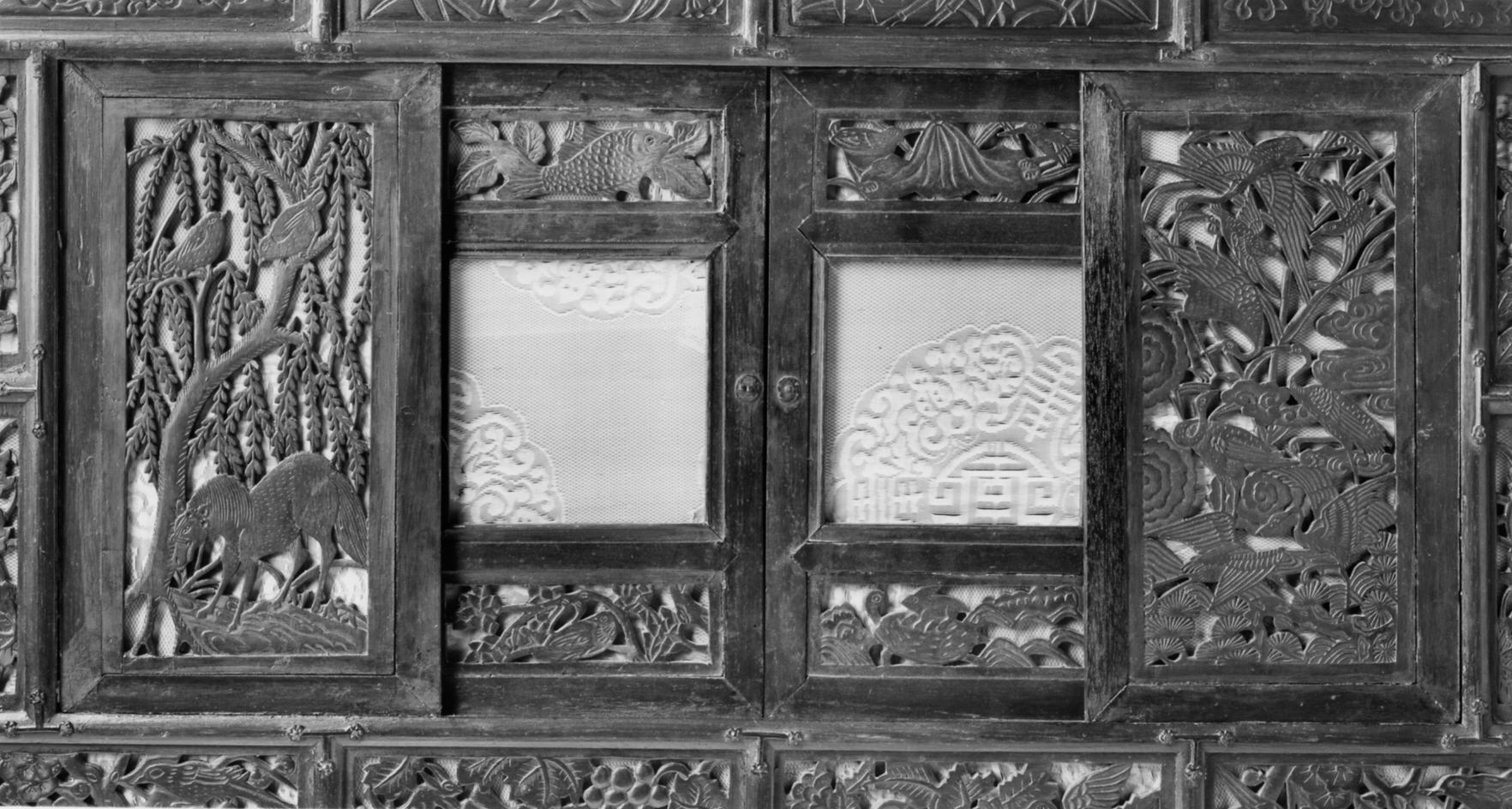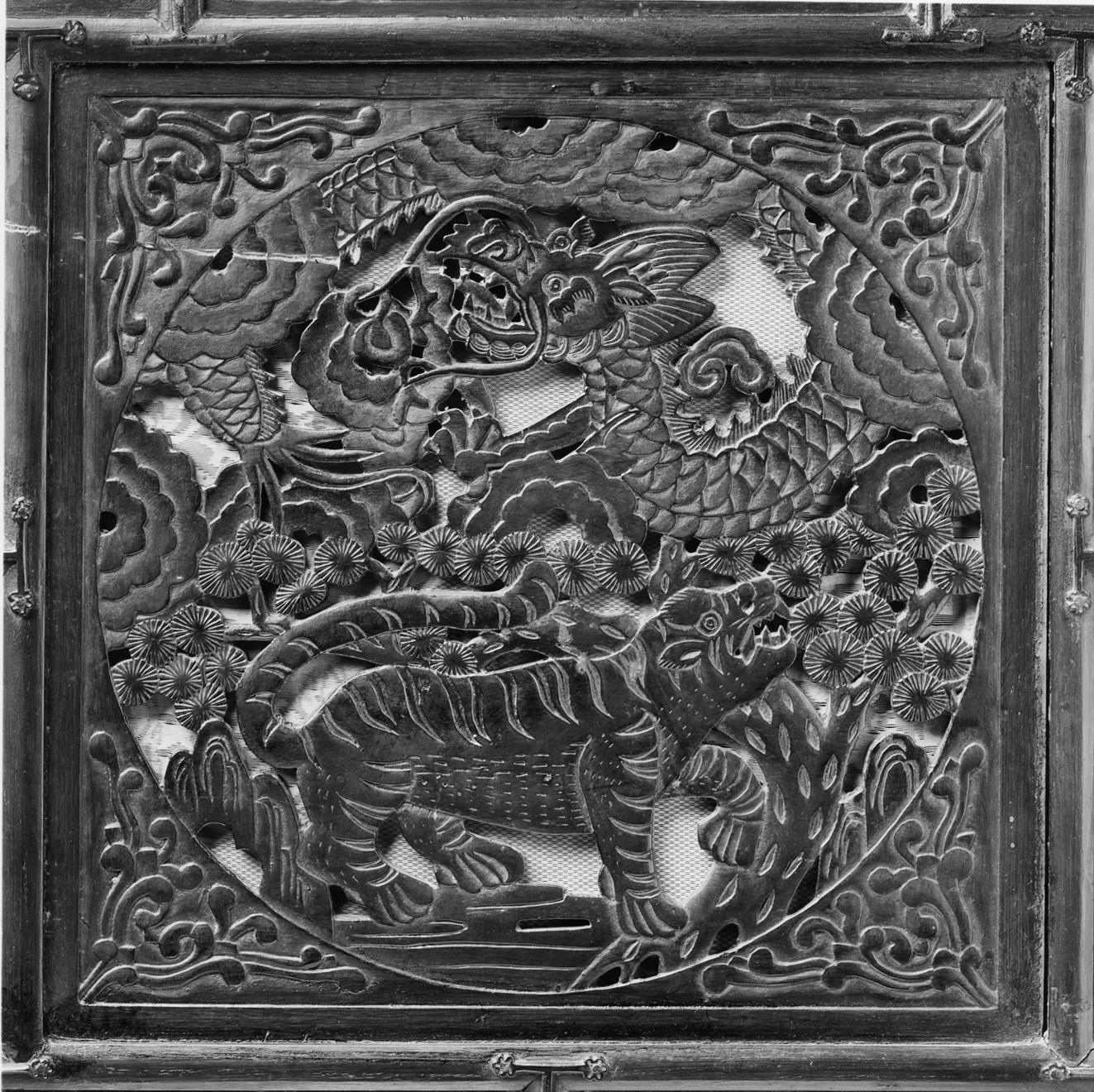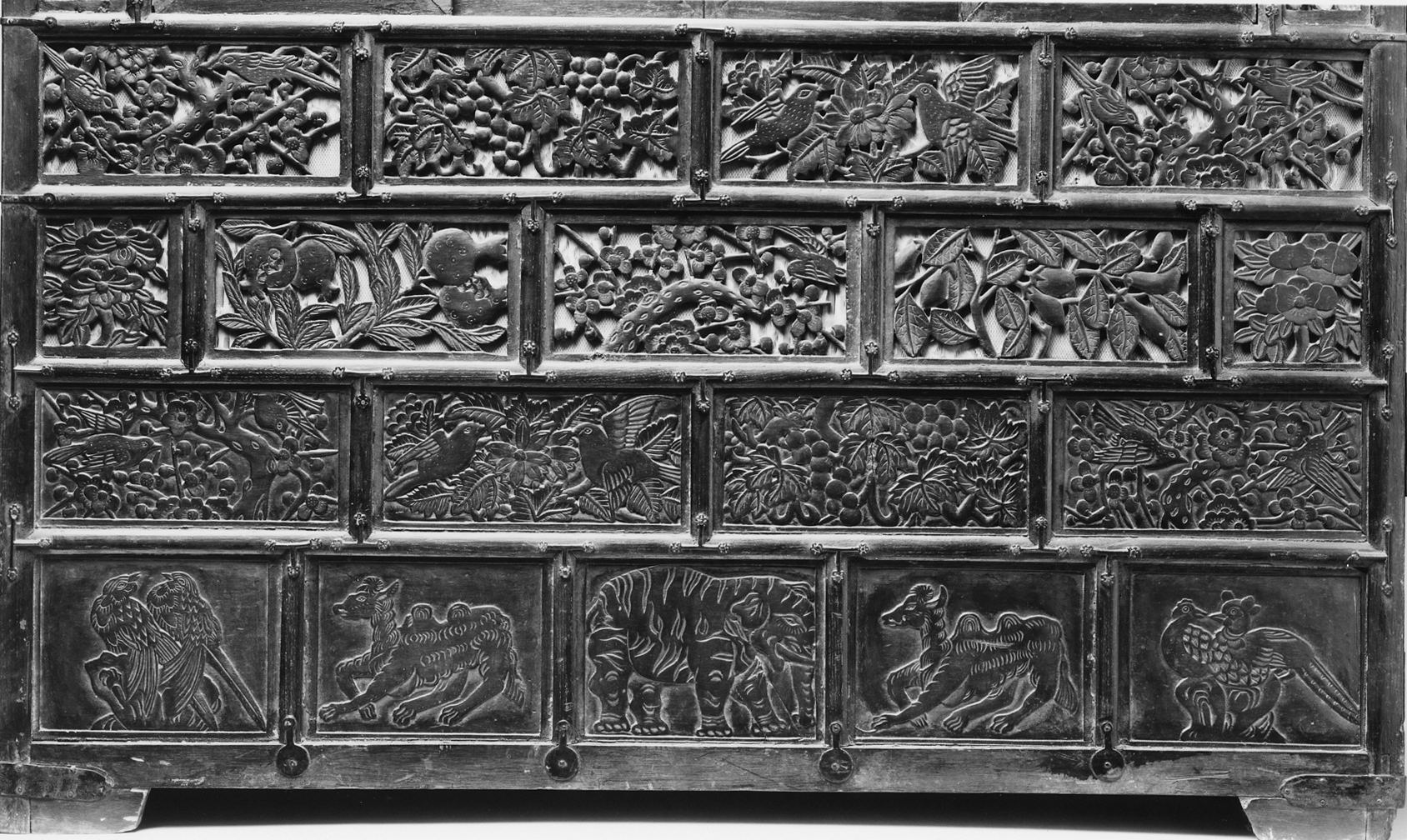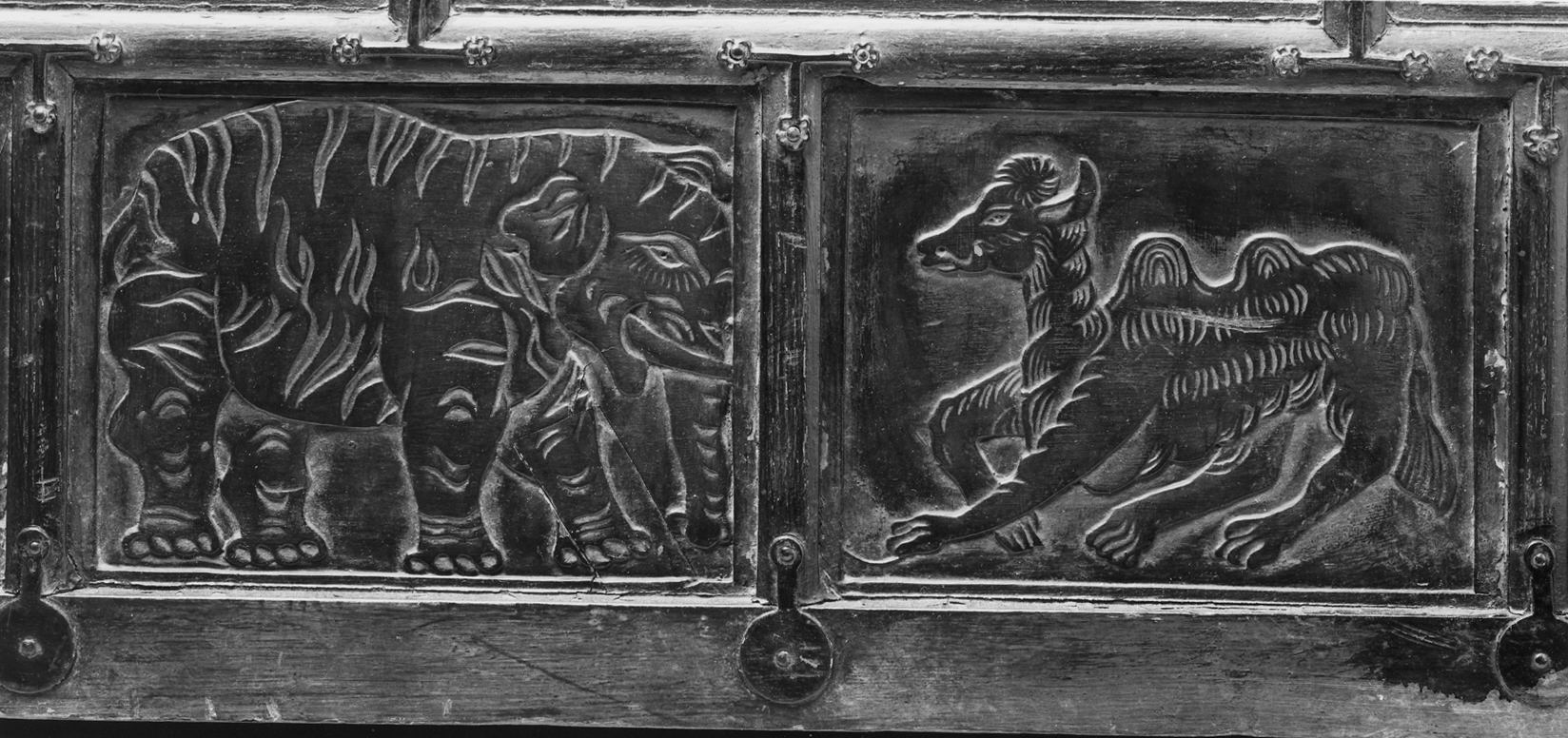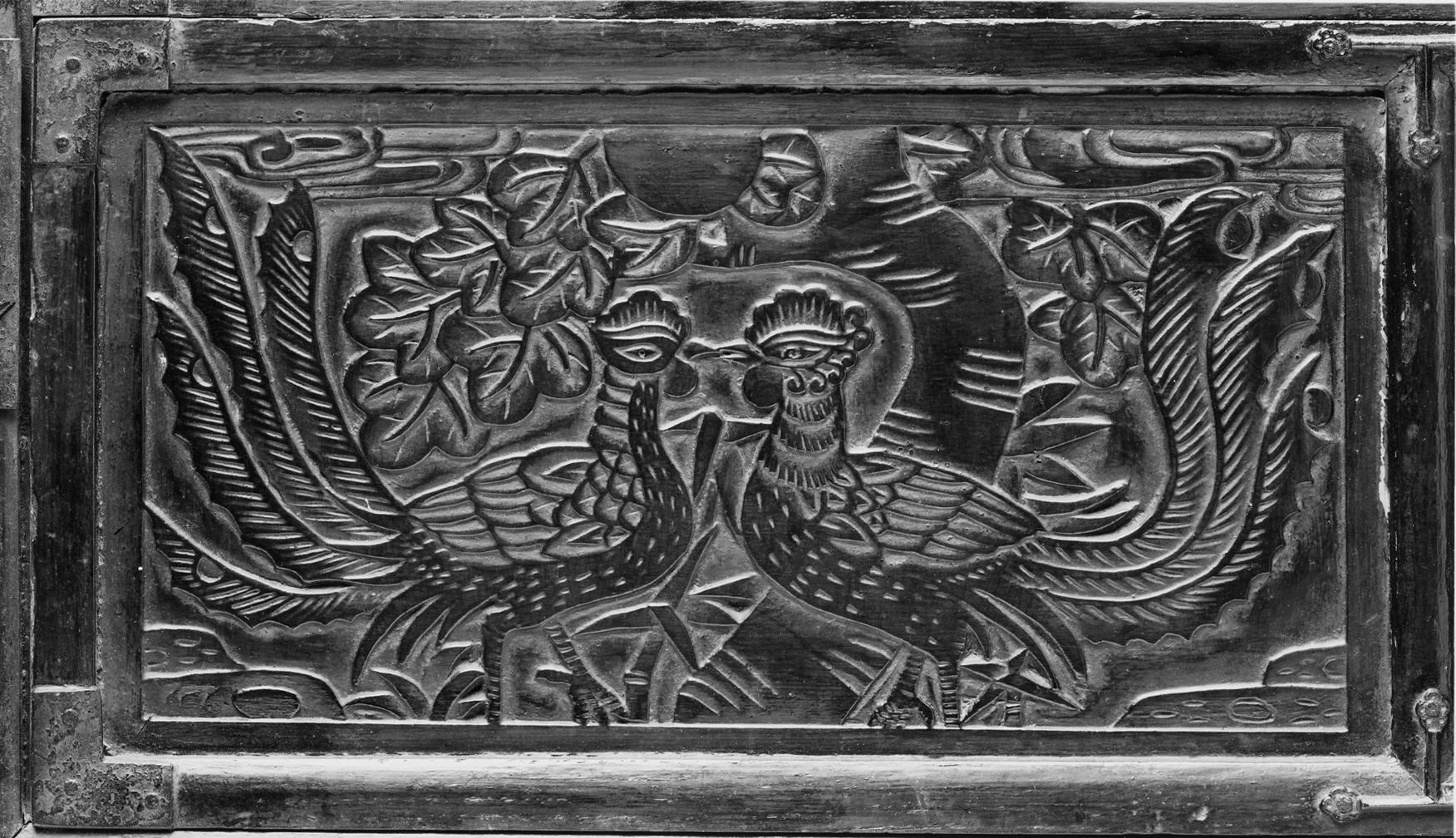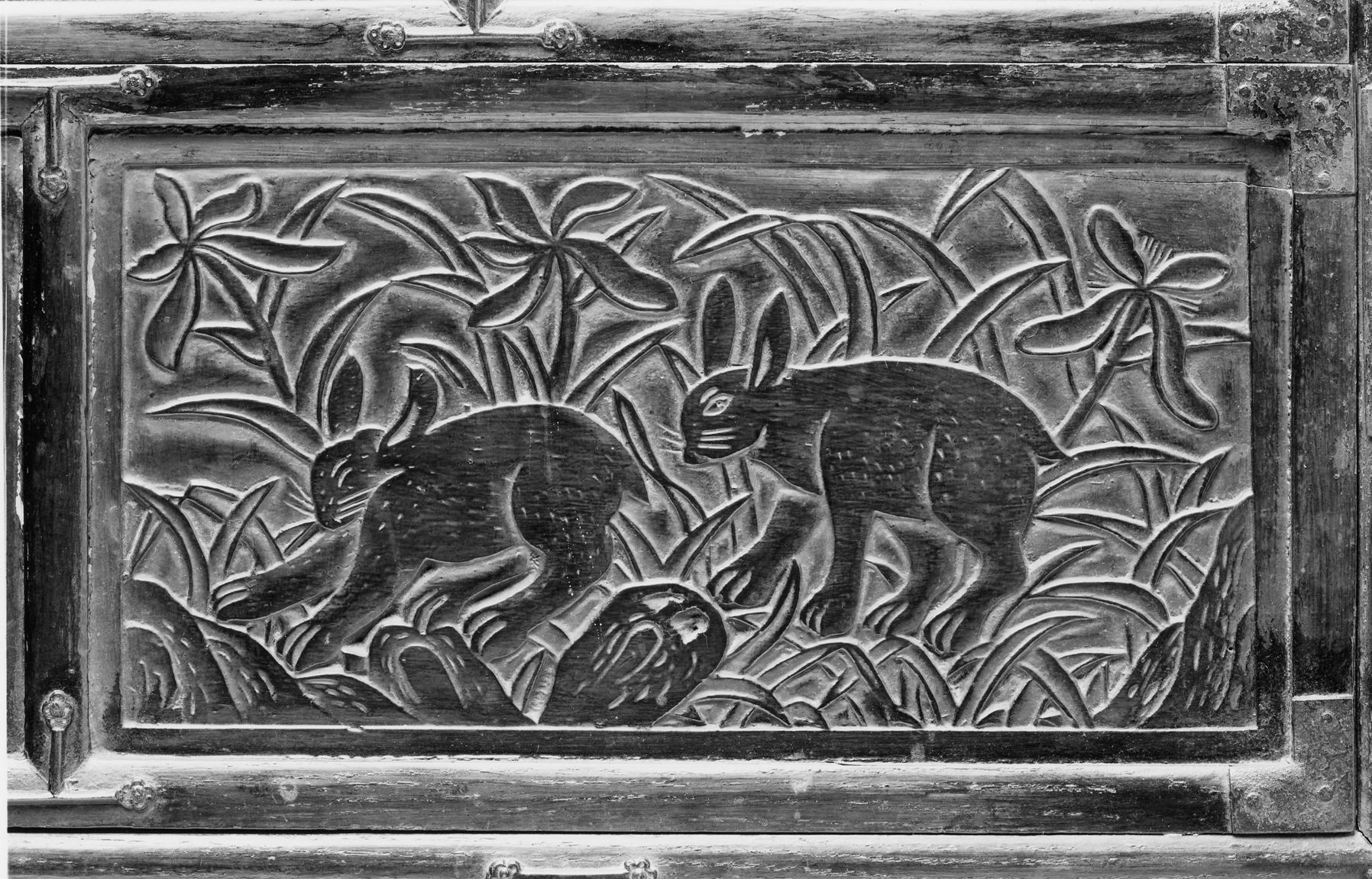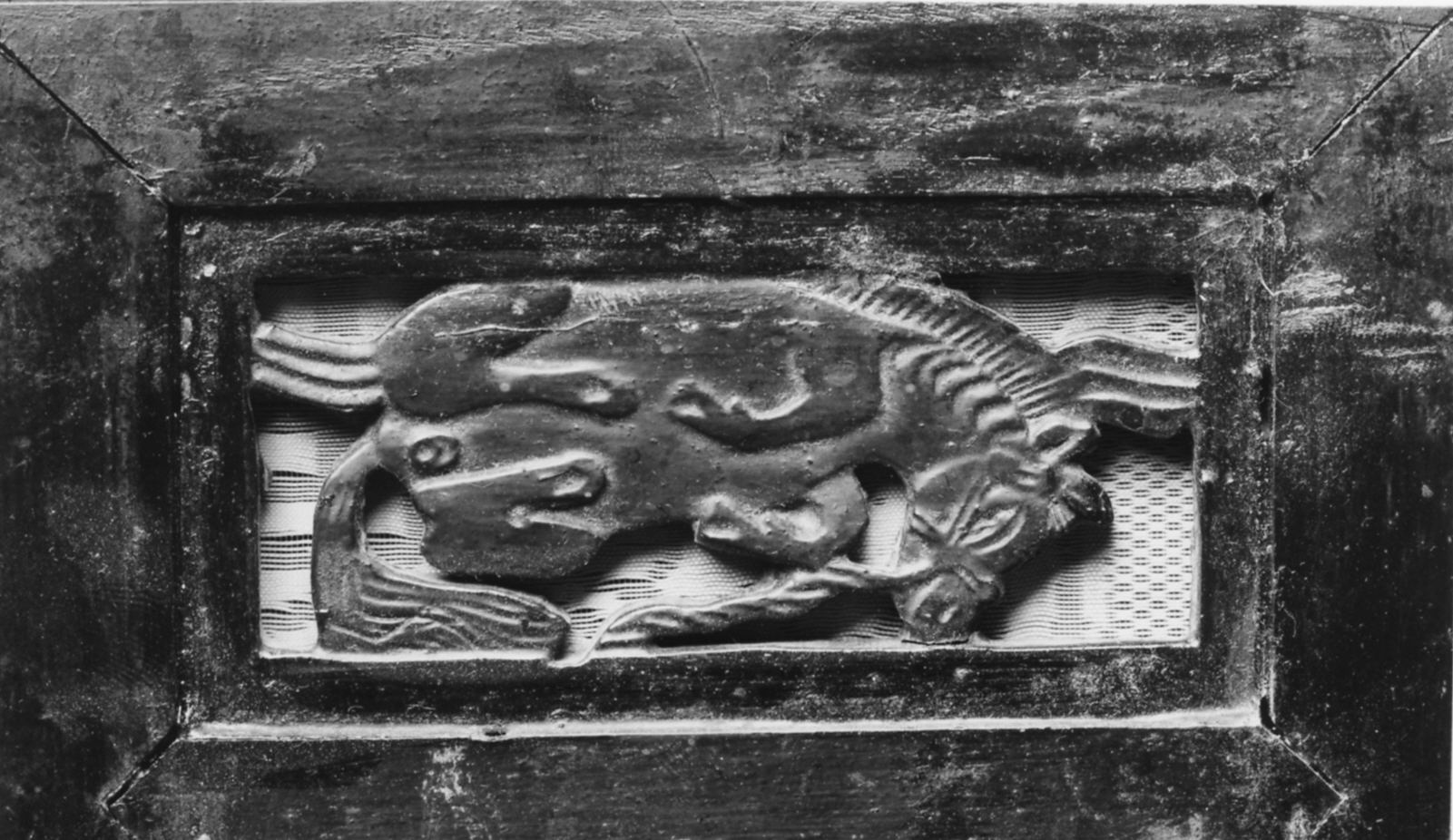Palanquin
Not on view
Judging by its size and pink lining, this palanquin, a form of transport for the elite prior to the twentieth century, was probably used by women. A removable domed cover and front panel allow access, while sets of sliding windows, lined to provide privacy, also let the occupant see out through the mesh. The palanquin is carved with auspicious and fantastical imagery ranging from tigers, phoenixes, elephants, and camels to peacocks, peonies, camellias, and grapes. By the mid-twentieth century, palanquins were used primarily for ceremonial purposes, such as weddings. Today some brides still arrange for a palanquin for portions of the ceremony.
Due to rights restrictions, this image cannot be enlarged, viewed at full screen, or downloaded.
This artwork is meant to be viewed from right to left. Scroll left to view more.
